Hezbollah’s fearsome watchtowers where spies observe Israel’s Lebanon border and gather intelligence to launch an October 7-style massacre from the north
When a concrete tower rose over the rural Hula Valley, the surrounding Israeli communities had no idea they were being watched.
Locals assumed it was another grain silo, part of the fast-growing agritech sector in the idyllic northern region. But after the October 7 massacre, the building's sinister purpose was revealed.
The tower is a Hezbollah outpost from which the Iran-backed terrorists have been secretly gathering information about them for more than two years to launch an identical massacre.
Now rockets are raining down on the Galilee Peninsula, just meters away on the Lebanese border, as part of a deadly barrage that forced 80,000 residents to flee south.
All this in sight of a UN building that will ensure that the extremists do not come within 10 miles of the border and start a war that makes Gaza look like child's play.
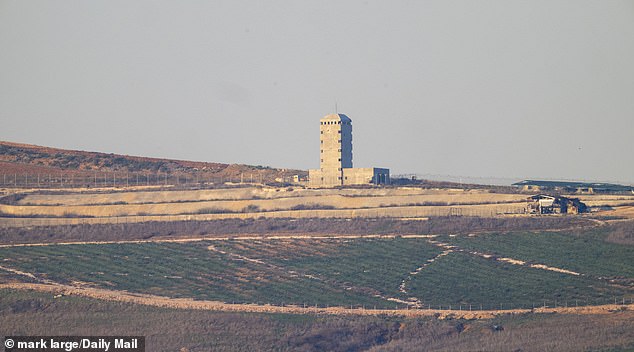
The tower is a Hezbollah outpost from which the Iran-backed terrorists have been secretly gathering information about them for more than two years to launch an identical massacre.
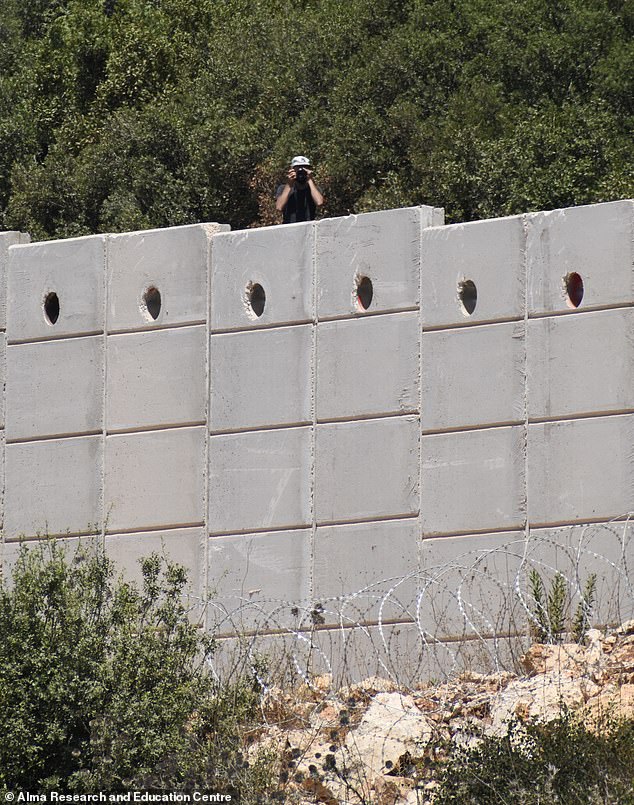
The photo shows Hezbollah soldiers spying near the Lebanese border with Israel
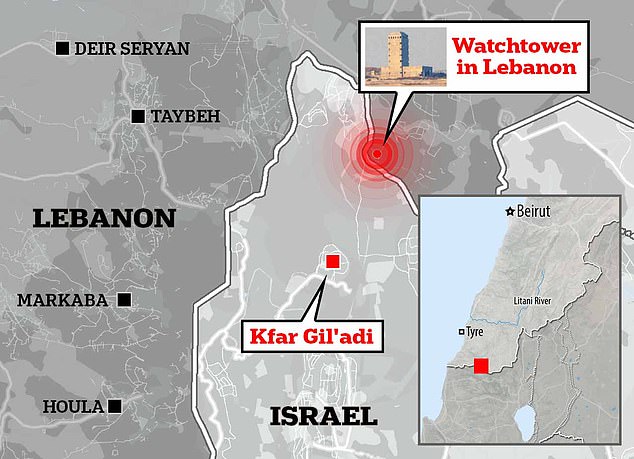
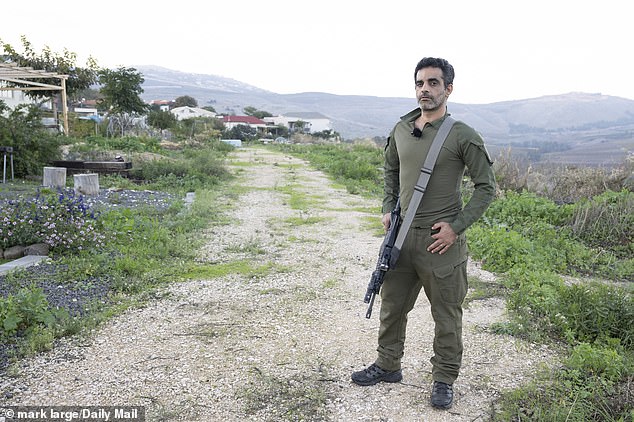
Nisan Ze'evi, a volunteer at the Kfar Gil'adi Kibbutz, Northern Israel, eight hundred meters from the northern border with Lebanon
“Now we see reality in a different way,” said local resident Nisan Ze'evi, pointing to the enemy watchtower just 800 meters from us in Kfar Gil'adi, which was exposed to some of the heaviest bombardments.
The Daily Mail traveled to Israel's evacuated northern border to witness first-hand the deadly cat-and-mouse game between Hezbollah anti-tank fire and Israeli missiles.
Overhead UAVs buzzed in search of Iranian-made suicide drones that a day earlier had killed a 53-year-old father of four guarding nearby Margaliot.
Hezbollah fired 40 rockets in one day last week and one stray attack would thrust Tel Aviv into a terrifying northern front with the most heavily armed non-state army in the world.
“Around this time the action starts,” said Mr. Ze'evi, as the impact of a rocket hitting one kilometer away shook the valley usually known for the 500 million migratory birds that pass through the rich swampland every year.
A few minutes later came Israel's booming response.
Mr. Ze'evi is an executive of a technology startup who took up arms along with just 20 residents to guard their evacuated village near Israel's northernmost point.
“We had no idea they were so close,” says the 40-year-old married father of two.
“Every farmer that we thought was just an innocent farmer just walking along the border, we now understand that they were collecting information about where we live, where the IDF forces are, where our children are.”
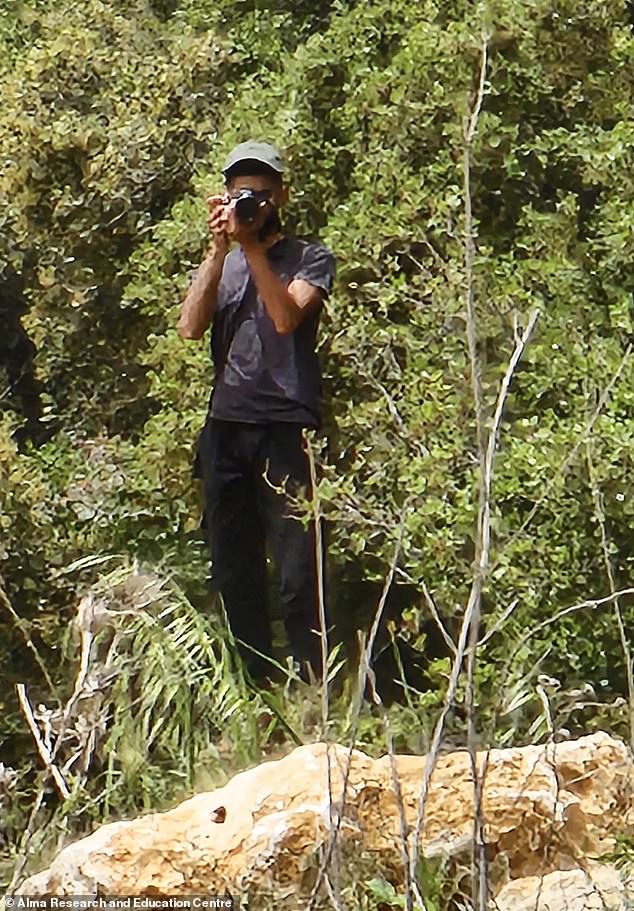
A man with a camera collects information from Lebanon at a location near the border with Israel
After the 2006 Lebanon War, a United Nations resolution guaranteed that Hezbollah would be disarmed and that no armed militants would come south of the Litani River in Lebanon.
But the 11,000 soldiers of the United Nations Interim Force Lebanon (UNIFL) have failed to keep their word, so it's up to men like Mr. Ze'evi and his group of CEOs, programmers and businessmen to confront the threat .
They form the Rapid Response Unit led by Commander Asaf Shaposnik, a 52-year-old married father of three who only a few months ago was running the local quarry.
“We have no other choice,” said Mr Ze'evi, whose wife, Bosmat, also 40, vacated the dream house they built together on October 8 with their children Eitan, eight, and Ariel, five.
“Here's what we learned from October 7 in the south. Everyone here close to the border is striving to gather intelligence, gather targets, and ultimately accomplish the main objective of the invasion.”
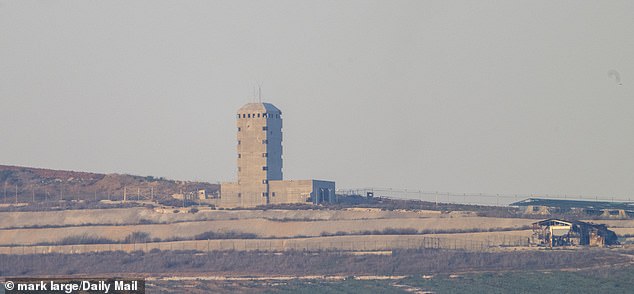
The enemy watchtower is barely half a mile away in Kfar Gil'adi
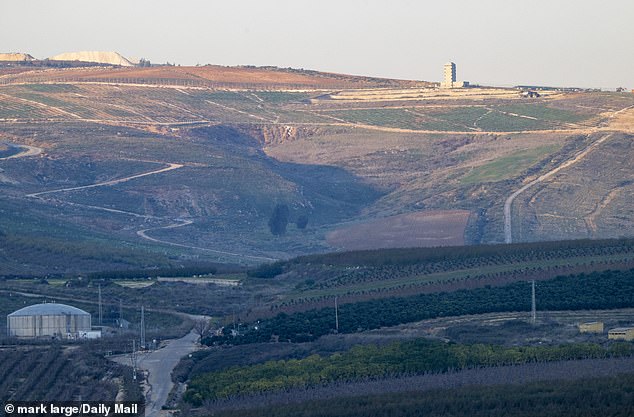
The concrete tower overlooks the rural Hula Valley
As long as Hezbollah and its tower remain, none of the 30 evacuated communities spread across the mountainous 75-mile border will return.
In addition to the daily rocket fire, it is a reminder that their murderous intentions could become reality any day.
Speaking with an M16 over his shoulder, Mr Ze'evi, who now has only his five-year-old boxer dog Joy and cat Oscar for company, said: 'This region is like Cornwall to Britain. No one would accept this there.
'That tower is an iconic symbol and must be destroyed.
'If the US, France and Britain can settle this diplomatically, perfect. But if not, we will demand that our government bring all the IDF's power into a 10-kilometer buffer zone. Anyone who enters this buffer zone will be shot in the head.”
Referring to a kibbutz on the Gaza border where almost every resident was killed or held hostage, he adds: “We will not be Be'eri 2.0.
'It was like a trailer, like a promo of what could happen here. We all know what Hezbollah is planning here. They will come up the road and slaughter us all.”
Indeed, Hezbollah has not hidden its intentions. The hardline Islamic regime broadcast on its TV channel a plan to bombard the region with rocket fire before sending in a ground force of 5,000 militants.
They would block mountain roads, storm the civilians in the kibbutz, and take as many women and children hostage as they could while slaughtering the men.
If this sounds familiar, it's no coincidence, explains Sarit Zehavi, a retired lieutenant colonel in Israeli intelligence and an expert on the dangerous northern border.
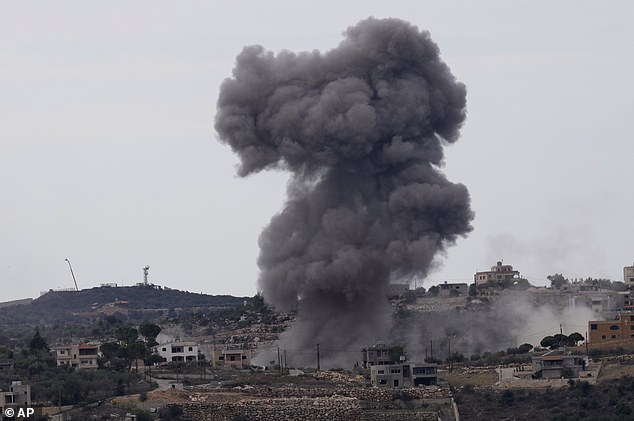
Black smoke rises from an Israeli airstrike on the outskirts of Aita al-Shaab, a Lebanese border village with Israel in southern Lebanon, Monday, November 13, 2023
“When you see this, you see that the plan was not written in Gaza, but in Tehran,” said the founder of the Alma Research and Education Center.
“Someone chose the south to start. This is the plan for the north. It could be a month, two months, a year, two years, I don't know. But it is clear to us that this was the plan for two fronts.'
The mother of two, who also lives in the Upper Galilee, added: “When I close my eyes, I see the women who were raped in Gaza, and we understand that this had to happen to us.”
A UNIFIL spokesperson said: 'We are deeply concerned by the violence we have seen along the Blue Line since October 8 and are in constant contact with authorities in Lebanon and Israel to urge all parties involved to stop fire and work towards a political solution.
“We consistently remind all parties that the use of locations near our positions to conduct attacks across the Blue Line is unacceptable and constitutes a violation of Resolution 1701.”
